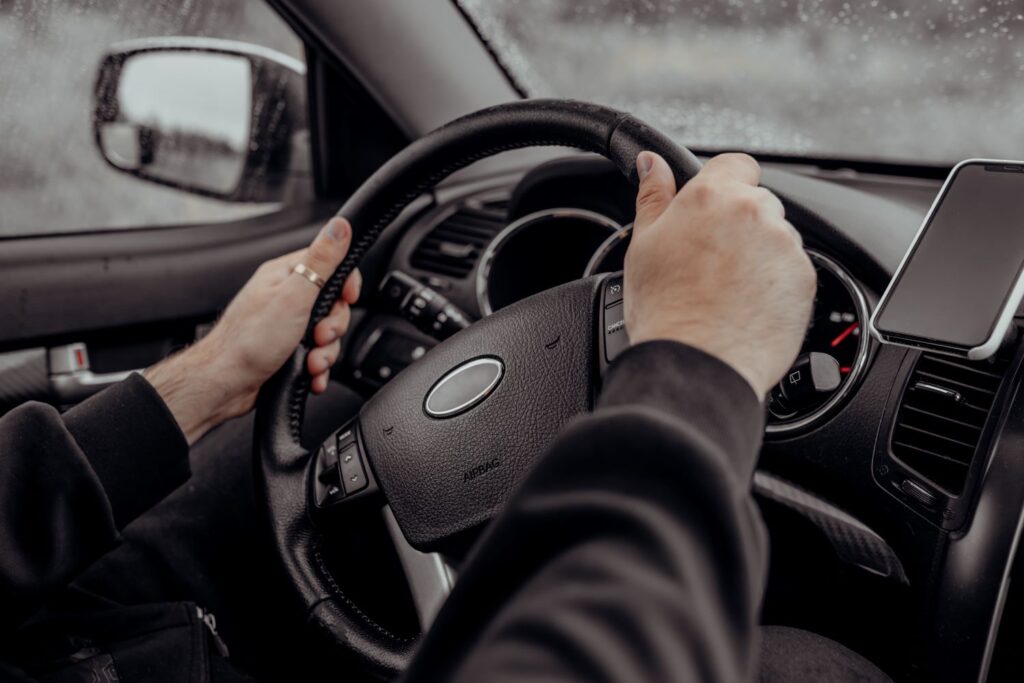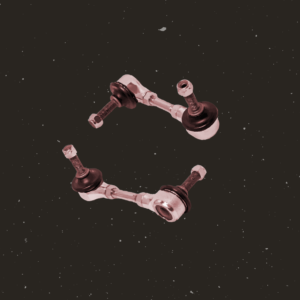If you own a vehicle with a coil spring suspension, then you’ve probably heard of a track bar. It’s a vital part of your vehicle’s suspension system, but what does a track bar actually do? What are some signs that it’s time to replace it?
Bad Track Bar Symptoms
Driving with a bad track bar can be dangerous, so it’s important to know when it needs replacing. Here are some bad rear track bar symptoms to look out for:
Vibrating Steering Wheel
If your steering wheel vibrates, then a faulty track bar is the likely cause. Its bushings wear over time, which can cause the track bar to loosen. Loose parts in the suspension system can cause the steering wheel to vibrate. This can negatively affect your vehicle’s driveability and cause bigger problems down the road. It’s best to bring your vehicle to a mechanic as soon as possible when this happens.

Wandering Steering
You might notice your steering wheel “wandering”, which causes your vehicle to drift from one side to the other. The reason behind this might be a worn track bar. A worn track bar will make your steering wheel feel loose, causing your vehicle to dangerously wander on the road even if you didn’t mean to. This increases your risk of getting into a traffic accident, especially when driving in heavy traffic. For your safety, replace your track bar as soon as possible.
Vehicle Pulls to One Side
If your vehicle starts to pull to one side while driving, then there might be an issue with the track bar assembly. In some cases, one end of the track bar wears out faster than the other side. This can cause the vehicle to pull to one side, making it hard to steer. Ignoring the issue can also damage your tires, brakes, and suspension, so be sure to fix it right away.
Noisy Track Bar
Another sign of a bad track bar is a clunking or popping noise whenever you’re driving at slower speeds and turning the steering wheel. This usually happens because the mounting bolts are too loose, causing the bar to vibrate and make noise. In some cases, you only need to retorque the bolts to fix the issue.
Turning the steering wheel will cause noise if it is loose.
–Anthony Harlin, ASE Certified Master Automobile Technician

Wobbly Driving
If your tires wobble uncontrollably while driving, then it might be because of a bad track bar. When there is too much space between the bushings, the track bar loosens. This causes the tires to wobble, even when driving on flat terrain. Wobbly driving can be dangerous, especially because it usually happens when accelerating. For your own safety, bring your vehicle to a mechanic as soon as possible.
What Is a Track Bar?
Also known as a Panhard rod, a track bar is an important part of your vehicle’s suspension system. It is a straight rod that connects to the axle on one end and the frame or chassis on the other. Together with the trailing arms and coil springs, it controls the axle’s side-to-side movement.
There are also ball joints that connect the track bar on one end sometimes.
What Does a Track Bar Do?
A track bar restricts the lateral movement of your wheels by keeping the axle centered. It connects to the chassis diagonally from the axle, preventing the axle from moving left to right too much. This allows the wheels to stay aligned with the driveshaft even when you’re driving over uneven surfaces, accelerating, or making turns.
Without a track bar, your vehicle will be hard to control due to the “rear steer” effect, which happens when your rear wheels aren’t straight. This can make your vehicle feel loose and unsteady, especially when you accelerate.

Other Track Bar FAQ
What Causes Track Bar Failure?
Like most parts of your vehicle, the track bar will wear over time. Exposure to water, dirt, and road salt can also cause corrosion. A track bar can also break from improper installation. Using the wrong bolts to secure it can damage a bushing, causing the rod to loosen and fail. Impact damage from a traffic accident can also cause the bar to break or bend.
Can You Drive Without a Track Bar?
Not all vehicles need a track bar. Independent rear suspension systems function well without one. However, if you own a vehicle with a solid axle suspension, then it needs a track bar to keep its axle centered.
For example, off-road vehicles need a track bar. Driving a vehicle without a track bar off-road will be difficult.
How Much Does a Track Bar Replacement Cost?
The price varies depending on several factors, including your vehicle’s make, model, and the product’s brand. On average, you can expect to spend around $20 to $360 for a track bar replacement.
Any information provided on this Website is for informational purposes only and is not intended to replace consultation with a professional mechanic. The accuracy and timeliness of the information may change from the time of publication.






























